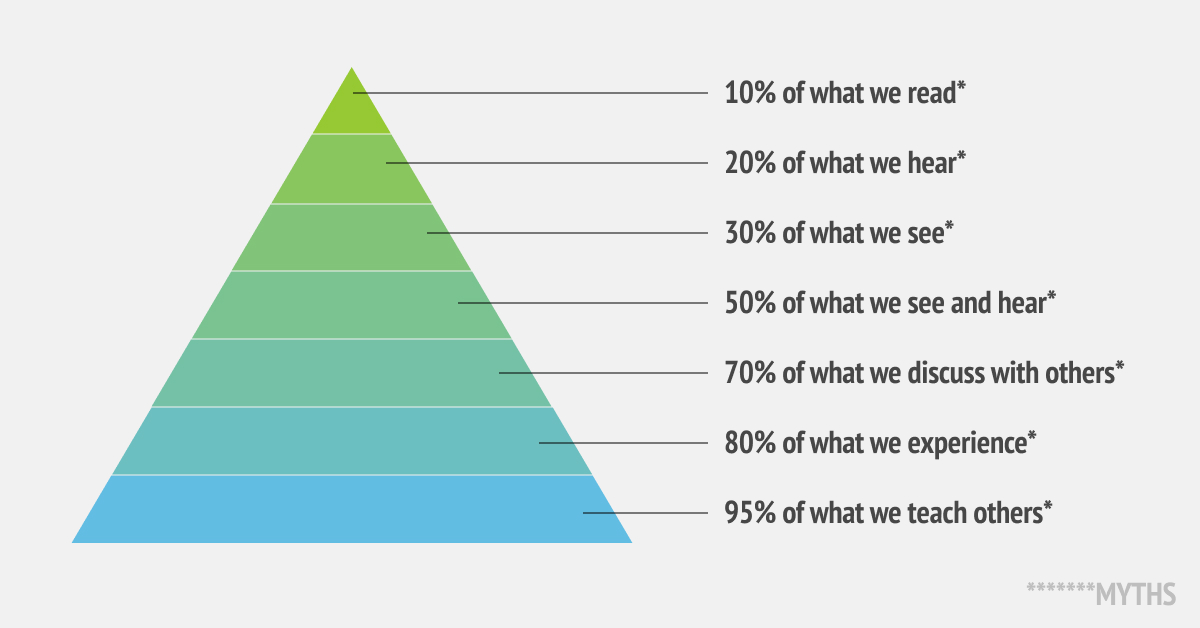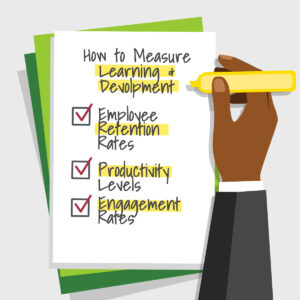Leading organizations understand the importance of learning and development (L&D). Accelerating technological changes, complex business landscapes, and a multi-generational workforce make reskilling and upskilling your employees more important than ever before. It can be the difference between staying ahead of your competitors or becoming obsolete in only a few years.
Despite this, many organizations still believe in common myths that have floated around L&D for too long. These myths are either an old way of doing things that no longer fit, aren’t accessible or approachable for all employees, or plain unhelpful to believe in. In this article, we will bust through five of the most persistent learning and development myths to stop believing in today for the benefit of your business tomorrow.
Everyone Has a Specific Learning Style
The most stubborn L&D myths often possess a kernel of truth. This is one of them. Someone can indeed have a preferred way of learning. Some people like to learn things by seeing them, others by hearing them, and still others by doing them. Visual, auditory, and kinesthetic learners, respectively.
However, matching the delivery of the content to a T to someone’s preferred learning style will not improve their learning. There is no experimental evidence that suggests a visual learner performs better on a strictly visual test, an auditory learner on an auditory test, etc. Numerous scientific studies have disproven the learning myth, most comprehensively in a 2009 article Learning Style: Concepts and Evidence.
Thankfully, this reduces the complexity of your L&D programs. You don’t need to invest resources to match the delivery of your content to your employees’ exact learning preferences on a one-to-one basis. Rather, offering dynamic courses that touch on each learning style will keep the content interesting and ensure everyone is engaged throughout.
We Remember only 10% of What We Read
Edgar Dale is an American educator best-known for developing the Cone of Experience. Also known as the Learning Pyramid, it combines ways of learning with how well you retain the information you’ve learned. You remember least while reading, the tip of the pyramid, and most while teaching others, the bottom of the pyramid. Unfortunately, over the years, percentages have been attached to the individual parts of the pyramid arbitrarily. It’s an L&D myth that we remember.

None of the above has any basis in empirical science. Edgar Dale’s pyramid is not meant to be taken too literally. Instead, the key takeaway is to provide a mix of instructional designs with learning processes and encourage teachers to combine ways of learning for maximum impact.
We Have the Attention Span of a Goldfish
Ok, we may have an attention span that’s longer than the infamous 8 seconds. To be clear, it is not true that humans have the attention span of a goldfish. The earliest evidence of this claim was found in a study that wasn’t peer-reviewed, where the authors weren’t named, the details of the procedure were scarce, and the metrics weren’t well-defined. On top of that, an advertising company had funded the study.
Think of your own attention span. Can you pay attention to something for longer than eight seconds? Of course you can because you’re still reading this blog. Attention is task-dependent. It’s easier to listen to a podcast on a topic you find highly interesting than it is to do a mundane task you dread. The reality is, it’s not that our attention spans erode over time. In fact, it’s that we live in a world where it’s easier to be interrupted and distracted. Especially if it’s a subject you’re not interested in.
This means your learning and development content needs to be interesting and remain poignant and thought-provoking. Otherwise, you really will lose people after eight seconds.
It’s Difficult to Measure the ROI of L&D

Many organizations are reluctant to spend money on L&D, because they think it’s hard to measure the return on their investment. Learning is so intangible, so why should we spend money on L&D if we can’t measure what we’ll get in exchange?
But think of Google’s 20% rule. When they are starting out, Googlers are encouraged to spend 20% of their working hours on whatever interests them. A terrible idea if you think about it in terms of immediate ROI. But this practice led to the creation of Gmail and AdSense, which have more than paid back all of the “lost productivity” of the 20% rule.
While the ROI of L&D might not have an immediate, short-term connection to your financial returns, that doesn’t mean it has no ROI whatsoever. In reality, there are many ways to measure L&D: employee retention rates, productivity levels, engagement rates, customer feedback, etc.
Generic Learning Experiences Are Impactful Too
Too many organizations still pay lip service to learning and development. They assume that all employees start at the same skill level and serve a generic L&D program without considering an employee’s needs and previous experience.
But no two employees are alike. Their skill levels and learning needs will differ depending on the job they do. Someone who works in enterprise sales will have different requirements than someone who works in business development. If you serve them a generic L&D program, chances are they’ll forget most of what they’ve been taught before the day has passed.
Fortunately, it needn’t be hard or prohibitively expensive to provide your employees with learning programs tailored to their specific needs. That’s where Skill-Up Technologies comes in. We provide digital learning strategies, solutions, and services tailored to your requirements. Together with a partner like Skill-Up Technologies, you can avoid L&D myths and pitfalls and build a global, digital-ready learning experience that is designed to make you succeed.


